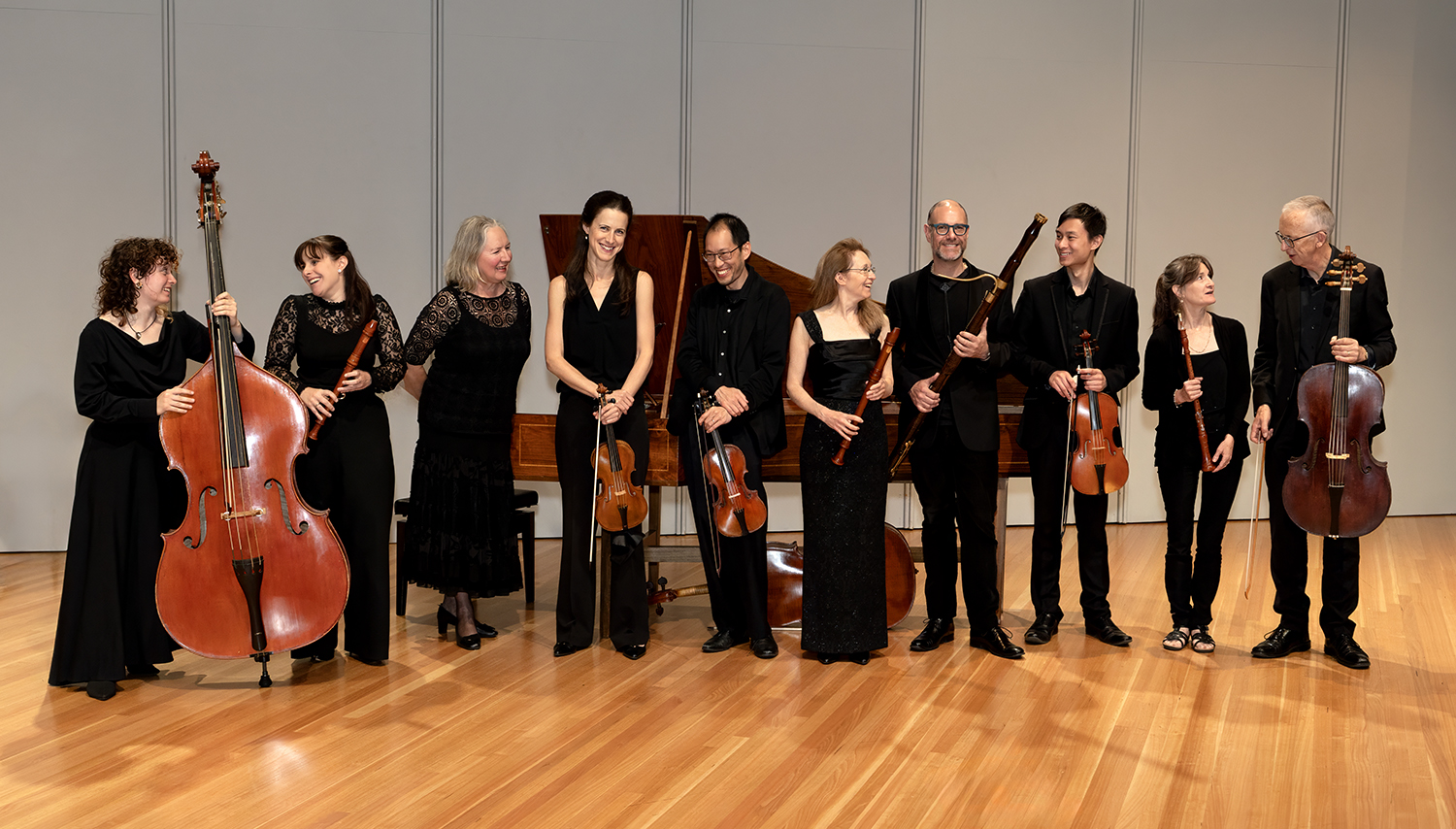This concert was performed in Canberra’s Fairfax Theatre, located in the National Gallery of Australia. It is a suitable venue for an intimate chamber ensemble.
Pisendel crops up quite regularly in early music concerts nowadays. His Imitation des Caracteres de la Danse is emblematic of how deeply this German composer was influenced by French musical tastes. The suite is a potpourri of French dances. As one would expect, there are changes in tempo and metre. The ensemble accentuated this by delving immediately into each movement, to great dramatic effect. After a quiet Musette (with a persistent droning bass redolent of a hurdy gurdy) came a tempestuous Polonaise, which capitalises on a very French harmonic progression. The ever-energetic John Ma gave percussive effect by stamping his feet while leading from the violin. However, it seemed at times, particularly toward the beginning, that the strings were out of tune.
The Adagio ma non Troppo from Janitsch’s O Haupt voll Blut und Wunden recalls a chorale fantasia, but in chamber setting. John Ma on violin and Brad Tham on viola develop intricate countersubjects until Jane Downer emerges on Baroque oboe with a hymn performed as though it were cantus firmus. The hymn tune is the same used by Bach in several of the St Matthew’s Passion chorales. It is interesting to see such an old artform used so late in the Baroque, and to such great effect.
Before the concert, this reviewer could hear the meandering bassline for bassoon in Bach’s Du mußt glauben, du mußt hoffen being performed backstage. That was a signal for the impressive bassoon performances throughout this concert by Ben Hoadley – not the least in Telemann’s Concerto in B minor for 2 flutes and Bassoon.
Albinoni’s Sonata a cinque in G minor Op 2 No 11 is decidedly Italian. It is a sonata representative of its time – ornate, with lush strings and prepared dissonances. Ma’s trills in the Adagio were incredibly sharp and the Allegro had a toe-tapping finale. The final movement had a staccato, pointed ending.
Then followed what was evidently an arrangement of Zelenka’s famous Miserere for four recorder. The way the choir bursts out after the strings’ dramatic introduction in the Miserere is always a moment to behold. The same effect was not achieved with a recorder quartet. However, it did have an effect of its own. Ma then took melodic lead in Bach’s Air on a G string.
Salut Baroque concert programs are always well-curated. They do not include pieces out of mere intellectual curiosity. They also invariably end with an energetic piece. Vivaldi’s Concerto in G minor RV 107 fulfilled that role. The final movement is a chaconne which, like most chaconnes, builds up to an energetic close.
